Ever since Amnesia: The Dark Descent, survival horror has been in vogue. With the inability of the playable character to fight back and the discovery of the plot through found items, all you can do is run, scream, and hopefully get to the end with your sanity intact.
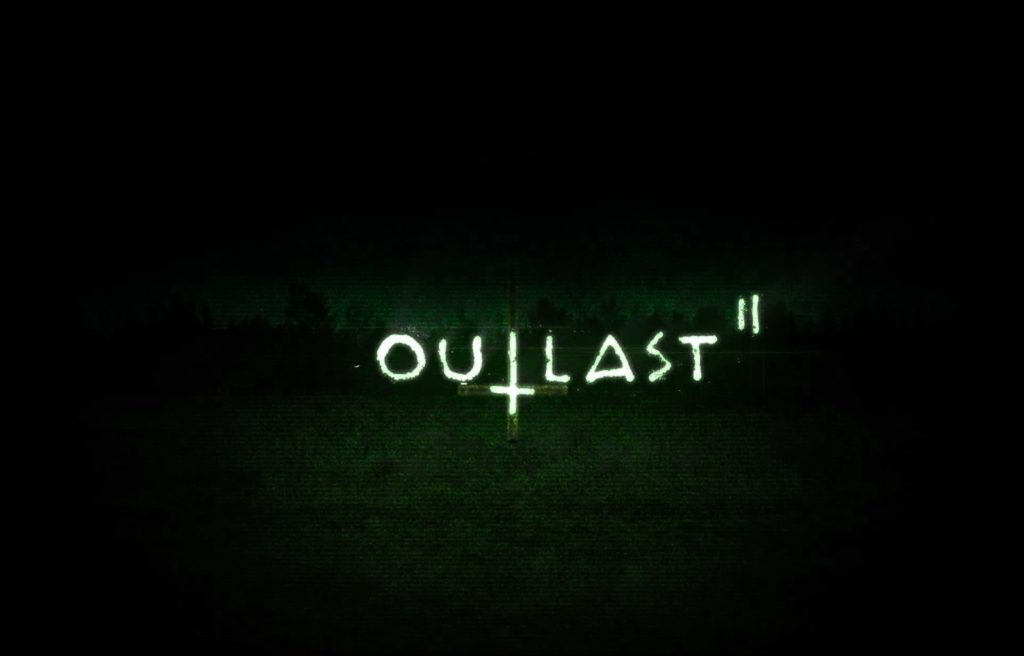
Then Red Barrels developed Outlast, a game that put you inside of a creepy-looking mental institution (just where we all want to be at night), where the lines between science and supernatural seem to blur, all thanks to the Murkoff company. People loved the game and clamored for more, which led to this year’s Outlast 2: a game that promised more horror with the trope of scary hillbilly people and a generous sprinkling of religion gone wrong.
A lot of things are indeed wrong within this game. And therein lies the problem.
Warning, significant spoilers lurk below!
At the opening of Outlast 2 you are told:
Lynn Langermann is an investigative journalist seeking the answers behind a pregnant woman murdered under impossible circumstances in rural Arizona. You are Blake Langermann, her husband, assistant, and cameraman. Record everything. Neither of you are fighters; to navigate the horrors waiting for you in the desert, your only choices are to run, hide, or die.
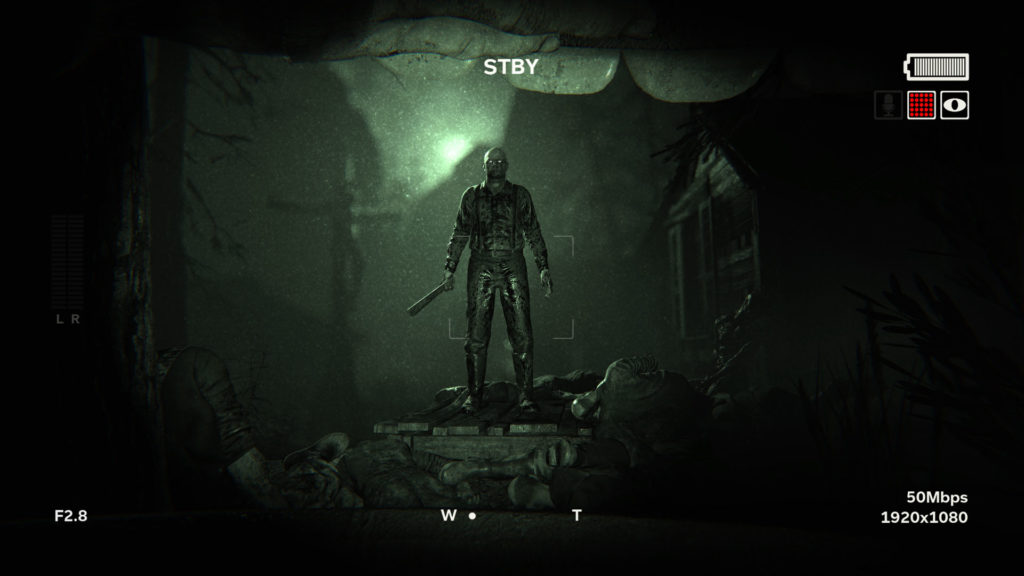
Death is a part of this town — and everyone there wants to kill you.
The Steam page for the game provides further information:
Outlast 2 introduces you to Sullivan Knoth and his followers, who left our wicked world behind to give birth to Temple Gate, a town deep in the wilderness and hidden from civilization. Knoth and his flock are preparing for the tribulations of the end of times and you’re right in the thick of it.
It sounds very promising, and indeed it starts that way. After a helicopter crash, your goal is to find your wife and you end up stumbling into a town that shouldn’t exist, populated by unpleasant strangers. You’re surrounded by pitch blackness and a lot of wilderness. There’s a lot of “What’s happening?” and “Where am I?” and “Oh God, what is this?” However as the game continues, things start to take a downward spiral.
In the first Outlast, you learned the history about what happened at Mount Massive Asylum through various notes, letters, and things patients tell you. Not every person you bump into wants to murder you in horrific ways. You eventually piece together what happened to both the patients and the company in charge of the place before finally receiving the final puzzle pieces at the end of the game. It was a unique story and the misdirection worked well. It reminded me vaguely of Michael Crichton’s book Prey.
Outlast 2 went the same direction — or at least it tried to. You pick up a lot of various notes and pieces of what’s called the Gospel of Knoth, which is nothing more than a made up gospel by Sullivan Knoth himself, which rants and raves about the end times and killing the Antichrist. It rarely tells you anything useful, and the same can be said for a lot of the other notes you find. Especially when it doesn’t take you very long to learn the main points the game features:
- Everyone thinks Sullivan Knoth is a prophet of God.
- Knoth believes the Antichrist will be born among them; hence there is a lot of baby and child killing.
- A group called the Heretics have split off and follow Val, who once followed Knoth. They’re cool with the Antichrist being born.
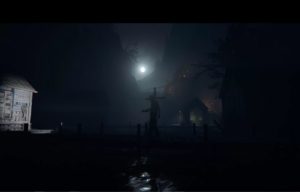
Another denizen of the town on patrol — they’re looking for you.
The problem is that a lot of the notes aren’t helpful at all, or they contradict what’s we’ve been told within the game. For example, you can find a short note clearly written by a child stating that she doesn’t want to die. As if to drive this awful point home, the note is in a baby carriage. But by then we already know babies and children are being murdered on the regular, both by seeing it (we’ll get to that bit in a moment) and hearing about it in other numerous notes, often in great detail. Or you find notes about Knoth sending people into town for provisions like medicine — and yet the place the Knoth-followers live isn’t supposed to exist. But as the game continues, that becomes increasingly far-fetched. The size alone means a lot of work would have gone into building it and bringing the supplies there, and it’s location in the mountains means doing so wouldn’t have been easy. Likewise, the oddness of the people that do go into civilization mean someone’s bound to notice something and start asking questions. There is also the fact that penicillin (and no doubt some of the other drugs being purchased) is prescription-based. Let’s not even get into where they’re getting the money for it.
This is also assuming you find all the notes. Many exist in locations while you’re being chased, and picking up a note doesn’t pause the game and give you time to read it. There are plenty of places you can easily miss notes on tables or on the ground, so putting together the whole story can be difficult. Most of the game you think you’re simply being chased by dozens of fanatics whose only wish is to murder you, only to be confused when you’re suddenly transported back into grade school and attempting to deal with a past event which seems to have no real bearing on what is transpiring now. At most it seems as though the end times really are happening, especially with the flashes of light and blaring horns that seem to be signals for the final days, and when you find your suddenly very pregnant wife. There are a lot of elements here that could make for a truly freaky experience because religion-gone-wrong and the apocalypse are heavy and disturbing concepts. However, the game developers rob players from this possibility as well by leaving in three clues to Murkoff’s involvement: a single note by the lake clearly referencing Murkoff employees; a note from one of Knoth’s followers describing strange metal towers; and the company’s logo, which can be found in certain recordings that you take with your camera. Granted, Red Barrels did tell fans that Murkoff was going to be back, but for this to be the result is quite a letdown.
In essence, Murkoff is using some type of particular microwave signal that’s slowly making people lose their minds. And apparently it’s doing it in tandem. It’s making people murderous, see visions of awful past events in their life, and horny. Yes, you read that right. But it’s hard to tell just when Murkoff started this little experiment with the signal — before Knoth created the town? After? Was he a part of their experiment? What purpose does this experiment serve, if so? Murkoff is about profit — this experiment, should the death of the entire town be a part of it (as everyone at the end of the game is in fact dead), does nothing for them. It’s like they’re the new Umbrella Corporation, but this signal is even more useless than the T-virus. Ultimately the story is presented poorly, doesn’t make much sense, and if you don’t find everything, you’ll just be left even more confused than if you had.
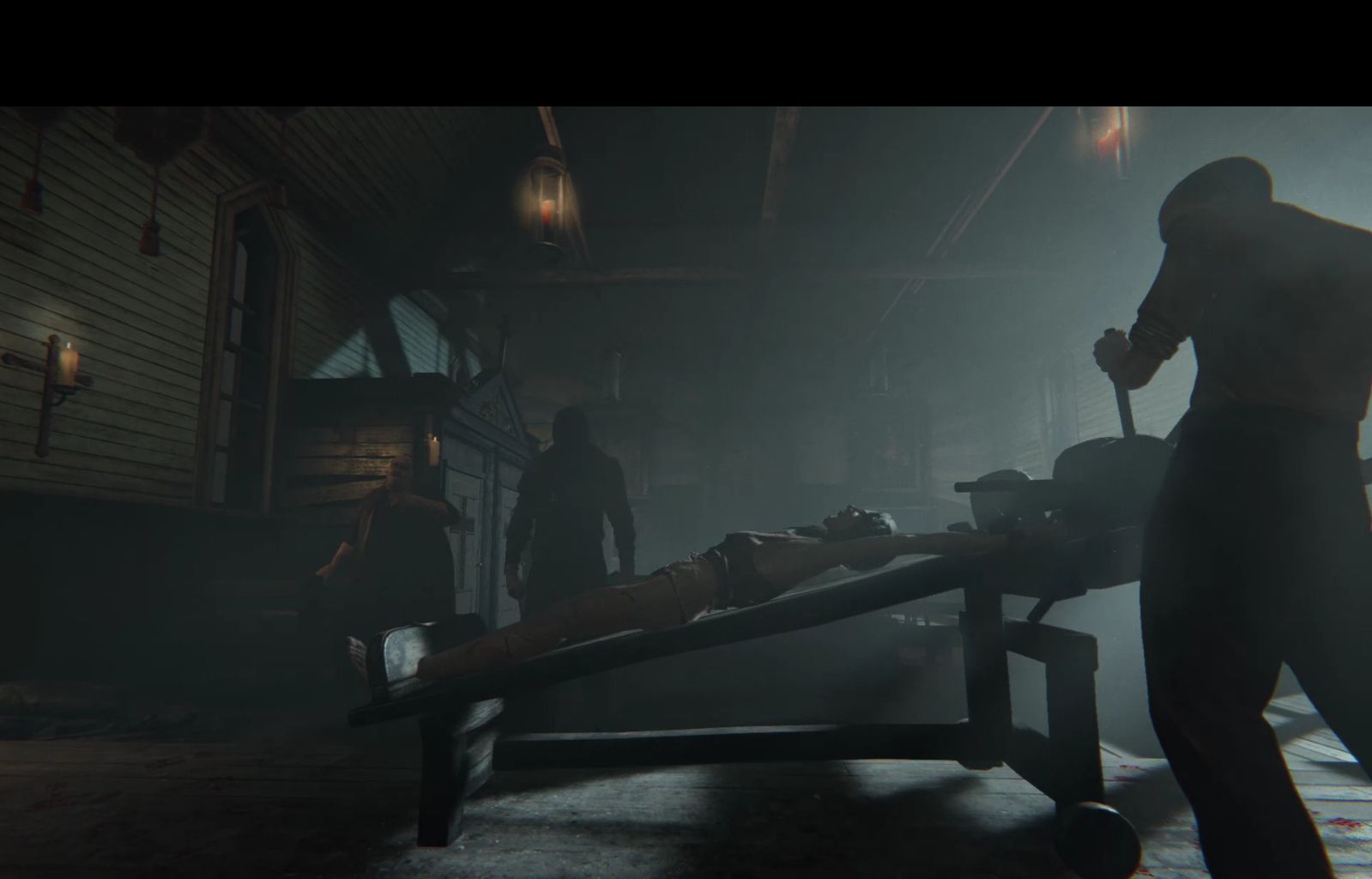
Welcome to the torture portion of Outlast 2.
But let’s say you’re not here for the story. You’re here for the thrills and chills. Unfortunately, Outlast 2 fails in that as well.
Comparatively, I would say Outlast 2 went the way of the Saw films. The first one had a clear goal, was well thought out, and only used gore-horror where necessary. After all, it wasn’t about the gore. But for some reason the creators of both Saw and Outlast seemed to think just because people got freaked out by the gore, they needed to up the ante, as it were. In Outlast 2, you’ll find the gore factor cranked up to 100 and it only served to make the game gross for the sake of being gross. The first few things you see are disturbing and jarring. But eventually it just becomes the norm, and the next time you see a body stripped of skin and wrapped up in barbed wire, it’s no longer scary.
In fact, you may even start to think in the opposite direction. Rather than being genuinely horrified as the genre suggests, I found myself starting to get annoyed. You’ll see several piles or pits full of dead bodies, children and babies included. You’ll see a man with his eyes gouged out on a torture wheel, and later you’ll watch as his wife is stretched to death on a rack (joints/bones snapping out of skin and everything). You’ll see rows of half-decayed babies in a house. At one point it will be raining blood. And eventually you’ll reach a cut scene in which people who are diseased with STDs (I am not making this up) catch you, throw up on you, and one of them cuts himself and forces you to drink his blood. What a game.
And that’s leaving out all the implied rape, pedophilia, and overuse of the word “cunt” involved in this game. I don’t have a problem with the use of these elements in horror (and frankly, I like the word “cunt”), but as you progress it starts to feel very much like it exists simply for the shock factor. For the look-how-edgy-we-can-be! factor. Gore for the sake of gore rather than for its ability to garner true fright from the player. There’s rarely a moment when you aren’t looking at a body somewhere or a smear of blood or intestine trail. In fact, there are so many dead people that it’s a wonder there are any people left in this town at all. They’re killing all the children and babies on a regular basis, but you also see what could amount to an actual truckload of dead adults. Maybe that’s why you never meet any interesting characters in the game — they’re all already dead.
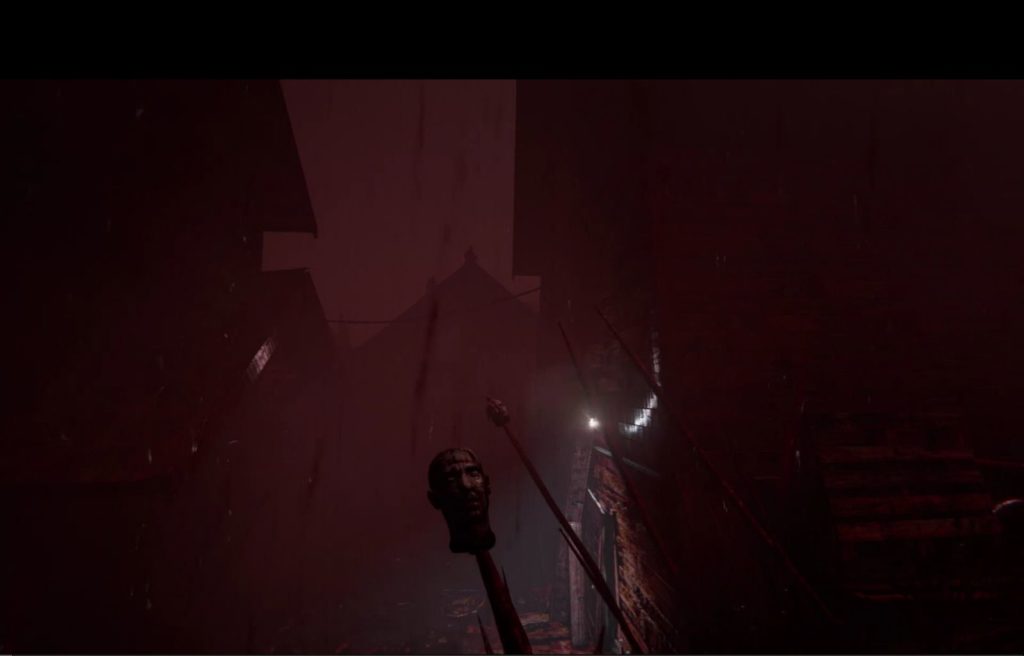
Forecast: Blood rain with a few scattered heads on spikes.
It was all very disappointing, to say the least. And yes, while Outlast and its extra down-loadable content had a lot of dead folk and plenty of disturbing moments, I would still say the bulk of them served some sort of purpose. At best, you knew who was doing the killing and why. In Outlast 2, when it came to all the dead adults scattered throughout the town, whether they be in their own houses, hanging from a tree, or tied burning to a post, you’re not even sure why they’re being killed. You know that Knoth and Val’s respective cults are most likely murdering each other, but that doesn’t always seem to be the case. It often appears as though Knoth’s people are killing each other, which makes no sense unless you want to go with the blanket Murkoff’s-signal-made-them-crazy assumption, but that’s boring and disappointing. But in the end they’re all dead anyway, so perhaps it doesn’t matter.
Outlast 2 had some promising trappings, but it just falls short in a lot of different ways. Others have been disappointed in everything from the gameplay itself to the ending (which, even if you do get all the notes and collectibles, is still baffling). I’d be more than happy to see Red Barrels make yet another scary game, but next time I would suggest leaving Murkoff and that extra bucket of intestines at home.
Screencaps taken from Outlast 2 trailer and from author of post.

No Comments